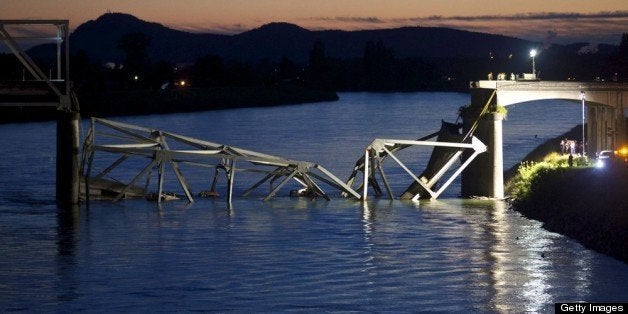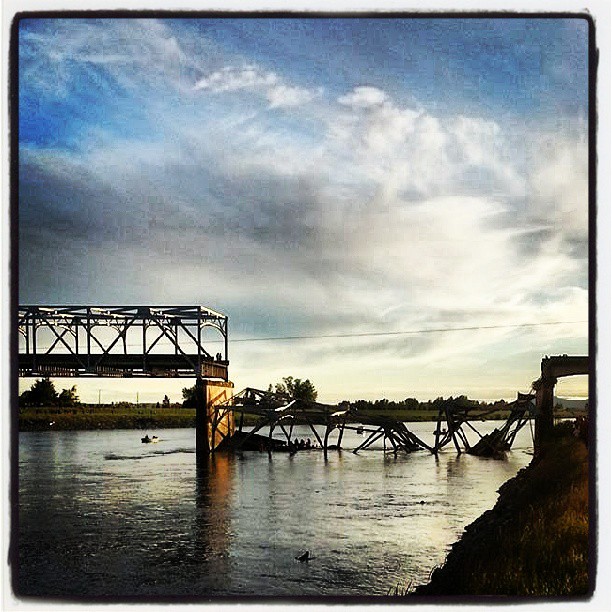
It's everyone's worst nightmare: You're driving along and all of the sudden your stomach drops like you're on a roller coaster and you see steel and debris and other cars flying everywhere. As you are about to plunge into the river, you realize what has befallen you and quickly start coming to terms with your own mortality -- and how the end might come much sooner than you had anticipated. Maybe the car starts sinking or perhaps you even wrangle open the car door and start swimming, but by this point you probably start screaming and wake up dripping with sweat.
Last night, this nightmare became a reality as part of a bridge on I-5 over the Skagit River collapsed in Washington State. The highly trafficked bridge carried an estimated 71,000 vehicles each day and is part of the main route connecting Seattle and British Columbia. Fortunately, this horrifying incident was not nearly as bad as it could have been: Two cars fell into the water and there have not been any reported fatalities. However, the state of our bridges should give all of us pause.
According to the U.S. Federal Highway Administration's Bridge Inventory, 146,633 out of 604,474 bridges in the United States are structurally deficient or functionally obsolete, amounting to a whopping 24.3 percent of all bridges our country. In some states, the situation is far more acute. For instance, 52.3 percent of bridges in Rhode Island have these problematic designations. These bridges are ticking time bombs in dire need of repair. A collapse has the potential to rival the most destructive acts of terror, with the ability to kill thousands of people at once, from commuters to school children to truck drivers. Any of us who ever drive, ride buses or trains, or even walk across bridges could be next.
In his State of the Union Address earlier this year, President Obama proposed a plan called "Fix-it-First" to immediately invest $50 billion into pressing transportation infrastructure projects throughout the country. The plan would make serious inroads by bringing "almost 80 percent of structurally deficient bridges up to date." Instead of funding the program, Congress actually reduced transportation infrastructure repair spending by $1.9 billion by failing to avert the sequester. This is unacceptable and the American people deserve better.
We should treat our decaying infrastructure as the national security threat that it is and dispatch troops to the ground. And by troops, I mean the million-man strong regiment of unemployed construction workers -- 13.2 percent of people in the industry. There is no logical reason why anyone from any party or persuasion would oppose the president's plan, except to say that it should go even further.
Congress must act to get Americans back to work fixing the veins and arteries that connect our nation. If they do not, it is only a matter of time before disaster strikes again -- disasters that could be prevented.
